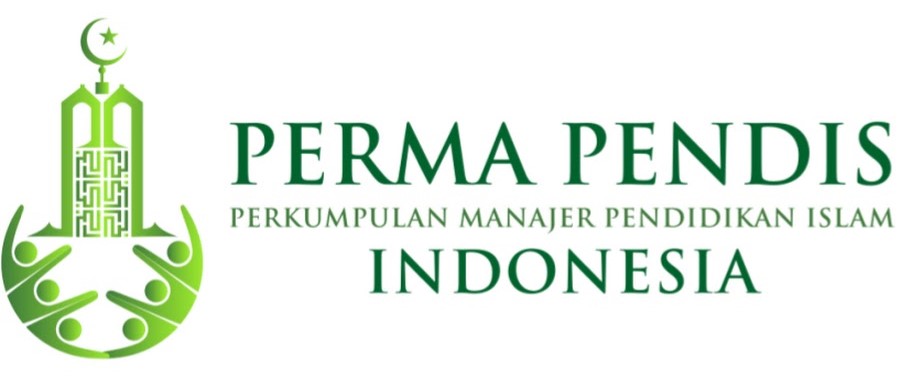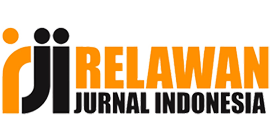The Role of the Pegon Script as Islamic Pedagogy in Supporting Religious Education, Local Identity, and Faith-Based Literacy in Banten Islamic Boarding Schools
DOI:
https://doi.org/10.29240/jsmp.v9i2.12823Keywords:
Pegon Arabic script, Learning, Islamic religious education, Islamic boarding schoolsAbstract
This study aims to examine the role of the Pegon Arabic Script in Islamic Religious Education learning at the Banten Islamic Boarding School, where in the process of translating the yellow book, mastery of nahwu and sharaf is absolutely necessary. However, both are considered difficult lessons for students to understand, including the translation process. This study uses a qualitative descriptive analytical approach through the case study research method. Data collection techniques through interviews, observations, and documentation, through data analysis techniques in the form of data reduction, data display, and data verification. From the results of the study, findings were obtained, where in the Islamic Religious Education learning process at the Banten Islamic Boarding School, including planning, implementation and evaluation. The Pegon Arabic Script plays a role and helps students in Islamic Religious Education learning, especially the process of translating the yellow book as teaching materials. Among its advantages, namely: all elements of the text are translated in more detail, vocabulary is wider, through symbols it can be easier, easier to understand the contents of the Yellow Book, appreciate the sense of language, and uniqueness that must be preserved. While the disadvantages are that it takes a long time to understand and requires a lot of teaching staff. Thus, the Pegon Arabic script can play a role and contribute to students in understanding the yellow book as a reference material for PAI learning at the Banten Islamic Boarding School.
Downloads
References
Abu M. Ghithrof Danil-Barr. (2011). Al-Itqan; Baca Tulis Arab Pegon. Pekalongan: Rofaq Muhda.
Afifah, I., & Sirojudin, D. (2022). Efektivitas Arab Pegon dalam Pemahaman Kitab Kuning di Pesantren Darun Najah Malang. Journal of Education and Management Studies, 5(6), 41–45.
Ahyar, Hardani, Helmina Andriani, Dhika Juliana Sukmana, Hardani, dan Nur Hikmatul Auliya. Buku Metode Penelitian Kualitatif & Kuantitatif. Edited by Husnu Abadi. Cet. 1. Yogyakarta: CV. Pustaka Ilmu, 2020..
Alwasilah, A. C. (2012). Pokoknya Kualitatif: Dasar-Dasar Merancang dan Melakukan Penelitian Kualitatif (Cet. 7). Bandung: Dunia Pustaka Jaya.
Anis Humaedi, et al. (2021). The Process of Establishing Islamic Education at Wali Barokah Islamic Boarding School in Kediri, Indonesia. Psychology and Education Journal, 58(2), 1827–1837. https://doi.org/10.17762/pae.v58i2.2340
Arifai, A. (2018). Pengembangan Kurikulum Pesantren, Madrasah dan Sekolah. Raudhah Proud to Be Professionals: Jurnal Tarbiyah Islamiyah, 3(2), 13–20. https://doi.org/10.48094/raudhah.v3i2.27
Arikunto, S. (2018). Prosedur Penelitian: Suatu Pendekatan Praktik. Jakarta: Rineka Cipta.
Azwar, S. (2013). Metode Penelitian (Cet. 16). Yogyakarta: Pustaka Pelajar.
Dhofier, Z. (2019). Tradisi Pesantren: Studi tentang Pandangan Hidup Kyai dan Visinya Mengenai Masa Depan Indonesia (Cet. 10). Jakarta: LP3ES.
Elmubarok, Z., & Qutni, D. (2020). Bahasa Arab Pegon sebagai Tradisi Pemahaman Agama Islam di Pesisir Jawa. Lisanul’ Arab: Journal of Arabic Learning and Teaching, 9(1), 61–73. https://doi.org/10.15294/la.v9i1.39312
Fahham, A. M. (2020). Pendidikan Pesantren: Pola Pengasuhan, Pembentukan Karakter dan Perlindungan Anak (Cet. 2). Jakarta: Publica Institut.
Fathonah, A. Z., Iwandi, Wahyudi, H., Rizki, A. F., Hidayat, H., Kurniawan, H., & Wahyuni, C. (2020). Mengagungkan Ilmu dan Ahli Ilmu Perspektif Imam Az- Zarnuji (Tela’ah Kitab Ta’lim Muta’allim Bab IV). Al-Fikra : Jurnal Ilmiah Keislaman, 19(2), 267–272. https://doi.org/10.24014/af.V19i2.11640
Fikri, I. (2020). Aksara Pegon : Studi Tentang Simbol Perlawanan Islam Jawa Abad Ke XVII-XIX. Jurnal Filsafat Islam, 2(1), 4. eprints.walisongo.ac.id/3829/
Firdaus, M. A. (2012). Metode Penelitian. Tangerang: Jelajah Nusa.
Fitri, R. (2022). Pesantren di Indonesia Lembaga Pembentukan Karakter. Al Urwatul Wutsqa: Kajian Pendidikan Islam, 2(1), 42–54.
Hamid, M. A. M. (2001). Pengantar Ilmu Shorof: Istilah Lughowi. Surabaya: PP. Fathul Mubtadiin.
Harahap, L., & Zainuddin, D. (2023). Learning Model of Kitab Al-Jurumiyah at the Islamic. Scientia, 12(1), 587–593.
Hidayah, B. (2019). Peningkatan Kemampuan Membaca Kitab Kuning melalui Pembelajaran Arab Pegon. Murobbi: Jurnal Ilmu Pendidikan, 3(1), 102–119.
Hidayani, F. (2020). Paleografi Aksara Pegon. Jurnal Tamaddun : Jurnal Sejarah Dan Kebudayaan Islam, 8(2). https://doi.org/10.24235/tamaddun.v8i2.7241
Khofifah, N., & Prianto, M. H. (2022). Korelasi Kemampuan Menulis Pegon dan Membaca Kitab Berbahasa Arab Jawi Santri Madrasah Diniyah Takmiliyah Awwaliyah Al-Hijrah Mojotengah. Pendidikan Agama Islam Miazhar, 1(2), 51–60.
Kurniawan, B. (2012). Metodologi Penelitian. Tangerang: Jelajah Nusa.
Masykhur, M. S. A. (2010). Menakar modernisasi pendidikan pesantren: mengusung sistem pesantren sebagai sistem pendidikan mandiri (A. Audara (ed.); Cet. 1). Depok: Barnea Pustaka.
Maunah, B. (2009). Tradisi intelektual santri: dalam tantangan dan hambatan pendidikan pesantren di masa depan. Yogyakarta: Teras.
Moleong, L. J. (2018). Metodologi Penelitian Kualitatif (Cet. 38). Bandung: Remaja Rosdakarya.
Downloads
Published
How to Cite
Issue
Section
Citation Check
License
Copyright (c) 2025 Cecep Nikmatullah, M.A Tihami, B Badrudin, Naf’an Tarihoran, W Wasehudin

This work is licensed under a Creative Commons Attribution-NonCommercial-ShareAlike 4.0 International License.


















